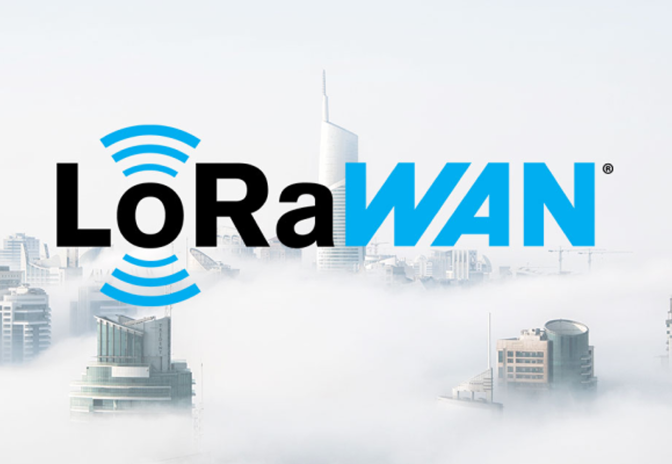Why LoRaWAN Is The Industrial I-IoT Enabler You Can’t Ignore (1/5)
Learn in our first article of this series about the perils of vendor lock-in, and LoRaWAN’s open ideology and limitless IoT possibilities.
Key Takeaways
1. No Vendor Lock-in means total control of LoRaWAN associated systems, data and costs.
2. LoRaWAN’s open ideology means its networks can incorporate any LoRaWAN device regardless of the supplier, manufacturer or purpose.
3. Addressing security concerns, LoRaWAN only sends data. Devices don’t receive commands via a single direction of data travel.
4. Saying you have an Open Protocol doesn’t mean no Vendor Lock-in.
5. Having no Vendor Lock-in means LoRaWAN has limitless IoT possibilities beyond the primary remit.
No Vendor Lock-in brings Autonomy
The first and often the most overlooked advantage of having no vendor lock-in is the simplest. It’s your system, your sensors and your data. You’re in charge. Being locked-in removes this edge. You don’t get to pick the devices that operate on your system. Your supplier does. When forced to match only the supplier-available devices to your specific data requirements, this can often compromise any data-led objective.
In addition, being locked-in means limited movement on costs. You must buy equipment and services from only your supplier and their selected partners throughout their entire supply chain. This will include hardware sensors, different software layers, infrastructure, and integration – and being charged to utilise your data.
With LoRaWAN, it’s the opposite. No lock-in means you can work with whichever supplier you choose, based on the best solution for your system.
LoRaWAN has an Open Ideology
One of the critical differentiators between LoRaWAN and other wireless solutions certified for use in the energy industry is the complete absence of vendor lock-in. A LoRaWAN network can incorporate any LoRaWAN device regardless of the supplier, manufacturer or purpose. In the more complex environments, the only possible restriction for use is the level of certification of the device – but this is the same for any other protocol.
The LoRa Alliance ® ensures the open ideology is continually upheld by overseeing compatibility and the standard’s progressive development.

“We always advise customers to consider the following aspects: vendor lock-in, battery life, security, range, and competing and complementary technologies.”
Finally, the absolute wireless nature of LoRaWAN ensures no vendor lock- in. There is no hard wiring and no specific plugs for connectivity. Over a LoRaWAN network, communication with any LoRaWAN third-party device is possible. So really, the only limitation to your network’s functionalities is the available devices and your imagination.
Negating any Security Concerns
Inevitably, talk of open ideology will undoubtedly raise security questions from some stakeholders. Thankfully, wireless technology will do little to weaken your overall network security, and with its fully encrypted and binary data transmission, it is impossible to access.
It is true, LoRaWAN messages are at a higher risk of being intercepted due to the much longer signal range, but in reality, the isolated, and still encrypted, binary data would be of little use to an interceptor. And crucially, the nature of LoraWAN means that while devices can receive data – in the form of updates, configuration and security responses – communication can only be initiated by the device, which means that hijacking devices is almost impossible, and if so, would be immediately detected by the rest of the network.
One further significant advantage to an open protocol is that you don’t have to trust a single supplier with your security. With so many vendors utilising LoRaWAN, security is permanently challenged and improved upon – all under the careful eye of the LoRa Alliance. LoRaWAN doesn’t rely on security by obscurity but by following evolving industry standards and best practices consistently being challenged and updated. And since it’s open, you can check under the hood to see how it works for yourself.
Most ‘Open Protocols’ are still Locked-in
It’s important to note that while other protocols available are ‘open’ – this is, the protocol is free for any manufacturer to use – the reality is that almost all of these solutions are only designed to communicate with only the manufacturer’s other products. Should you decide to add third-party assets and functionality with these solutions and devices, it is not easy to incorporate and often has reduced function or is simply prohibited.
So, whilst devices may share a network communication protocol, it’s standard practice for manufacturers, suppliers, and integrators to limit any possible integration of products outside of their family. Physical connection compatibility, network access and DCS control mean a facility is bound by the original vendor when adding smart assets and functionality to a network. This is what is meant by vendor lock-in.
A Genuine lack of Vendor Lock-in brings Limitless Expansion
When we narrow the scope to the oil, gas and chemical industries, having no vendor lock-in means a single LoRaWAN network can support IoT strategy long into the future. A facility could have tens of thousands of sensors

monitoring every aspect of possible variables in the plant infrastructure.
One last key takeaway is that companies that operate LoRaWAN can utilise this network for other purposes outside the remit of the initial installation. So, whilst the primary focus is monitoring and predictive maintenance, the networks can seamlessly incorporate data from other activities.
This ideological freedom is tailor-made towards the conceptual expansion of networks, leaving engineers free to explore limitless IoT possibilities. Anything from equipment location and identification to a vehicle’s battery status. Or maybe, harvesting weather data to increase climate-related decision-making.
It’s up to you!
This article was published on LinkedIn in Spring 2023.
